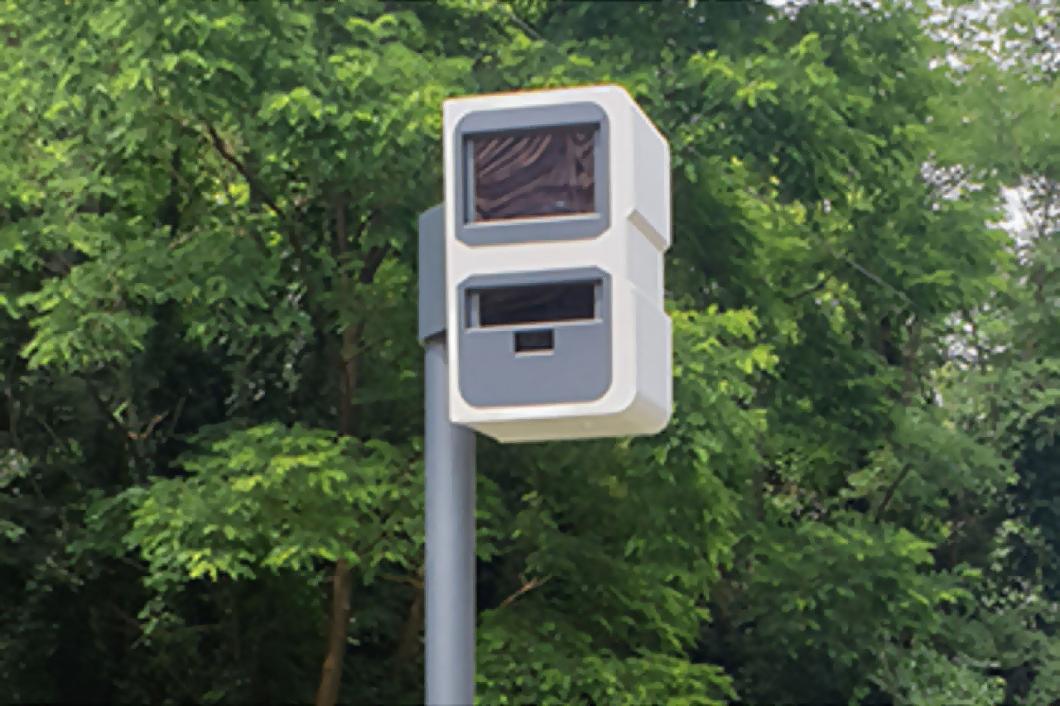Urban Speed Cameras in France: How They Work and What to Expect in next year ?
Lufop
A new face for urban traffic enforcement
Over the past few years, France has been modernizing its urban traffic enforcement tools. The main goal: to better protect vulnerable road users (pedestrians, cyclists, children) and improve safety at hazardous intersections. It is within this context that urban speed cameras have been introduced — a new generation of devices that are more discreet, more mobile, and more intelligent.
What is an urban speed camera?
Unlike traditional fixed speed cameras, urban radars are designed to blend into the urban landscape without being easily noticeable. Installed on lamp posts, traffic lights, or other street furniture, they are typically signaled by a small discreet sign placed only 20 to 30 meters ahead. Their goal isn’t to trap drivers, but rather to deter dangerous behavior in urban areas.
These devices can currently detect several violations: speeding, running red lights, and soon other risky behaviors such as mobile phone use while driving or encroaching on bicycle lanes.
Deployment of urban radars in France
The rollout began in 2021 with a pilot phase in several test cities. By January 2024, the system became fully operational. The first cities to be equipped included Marseille, Montbéliard, Sochaux, Toulouse, and the Territoire de Belfort.
Since then, many urban areas have followed. Urban radars can now be found in:
- Montpellier
- Marseille
- Montbéliard
- Belfort
- Toulouse
Other cities like Metz, Lille, Bordeaux, and Dijon are on the list for 2025. In total, more than 500 additional urban radars are expected to be installed over the next two years.
A national system with high potential
In 2023, there were around 3,500 automatic traffic cameras installed in urban areas in France. Thanks to new legislation — especially the 3DS law — local authorities can now request and install their own radars under State supervision. This significantly accelerates nationwide coverage.
These devices are strategically positioned: accident-prone intersections, areas near schools, high-traffic roads, or zones with frequent citizen complaints.
Two main models
Two primary urban radar models are currently in use:
- The Nomad by Parifex – mostly deployed in northern France
- The Mesta Compact by Idemia – more common in the south
Both models share several features: compact size, advanced embedded technology, and the ability to operate as decoys (some units are inactive and rotate locations to confuse drivers).
Technology and how it works
These radars are equipped with Doppler sensors, infrared cameras, and sometimes intelligent image recognition systems. Unlike older models, they do not use a visible flash, making them much harder to spot.
They can monitor traffic in both directions. Each unit is currently programmed to detect only one type of violation at a time — either speeding or red-light running.
However, starting in 2025, some next-generation urban radars will be able to detect multiple infractions simultaneously:
- Speeding
- Running red lights
- Phone use while driving
- Seatbelt not fastened
- Driving in bike lanes
- Tailgating (unsafe following distance)
- Failure to stop at stop signs
Violation processing
Once a violation is recorded, a timestamped image is automatically sent to the National Processing Center based in Rennes. The fine is then generated and mailed directly to the registered vehicle owner.
The entire process is automated, requiring no human intervention. This allows for faster processing and a scalable enforcement model.
A tool for safer cities
Urban radars are not just about punishment — they are part of a broader policy aimed at reducing road fatalities. In 2023, urban areas accounted for 68% of pedestrian deaths in France, according to the French Road Safety Authority (source).
By identifying hazardous areas, limiting speeding, and collecting traffic data, these radars also help local governments make better infrastructure and mobility decisions.
What about the fines?
The expansion of urban radars inevitably leads to an increase in fines. However, part of the revenue is reinvested in sustainable mobility initiatives:
- Development of secure bike lanes
- Expansion of pedestrian zones
- Improved road signage and markings
These reinvestments are state-regulated and aim to make cities more accessible, greener, and safer for everyone.
FAQ – Frequently Asked Questions
- Can an urban radar detect multiple violations at once?
- Not yet. Currently, each radar is limited to a single type of infraction, but this is expected to change in 2025.
- Are these devices really invisible?
- They’re extremely discreet — often integrated into street fixtures and using infrared instead of a visible flash.
- How can I know where they’re installed?
- You can check the national radar map or use updated GPS apps like Waze or Coyote.
- Can local mayors install them?
- Yes, under the 3DS law, municipalities can request radars to be installed in their jurisdiction with State coordination.
Conclusion: building calmer cities
Urban speed cameras are set to become a key part of road safety strategy in French cities. Thanks to their advanced technology, adaptability, and discreet design, they are helping transform urban spaces into safer, more fluid environments for everyone.
They’re not meant to trap — they’re here to protect. So drive mindfully, ease off the gas, and keep your eyes open. 😉
Si cet article vous a intéressé n'hésitez pas à  vous abonner aux flux par RSS,
vous abonner aux flux par RSS,
directement  par eMail ou suivez-moi sur twitter @Lufop
par eMail ou suivez-moi sur twitter @Lufop
Le site vous est utile? Soutenez le site lufop.net :

Si tu as une question ou un problème, utilise le forum, il est là pour ça.